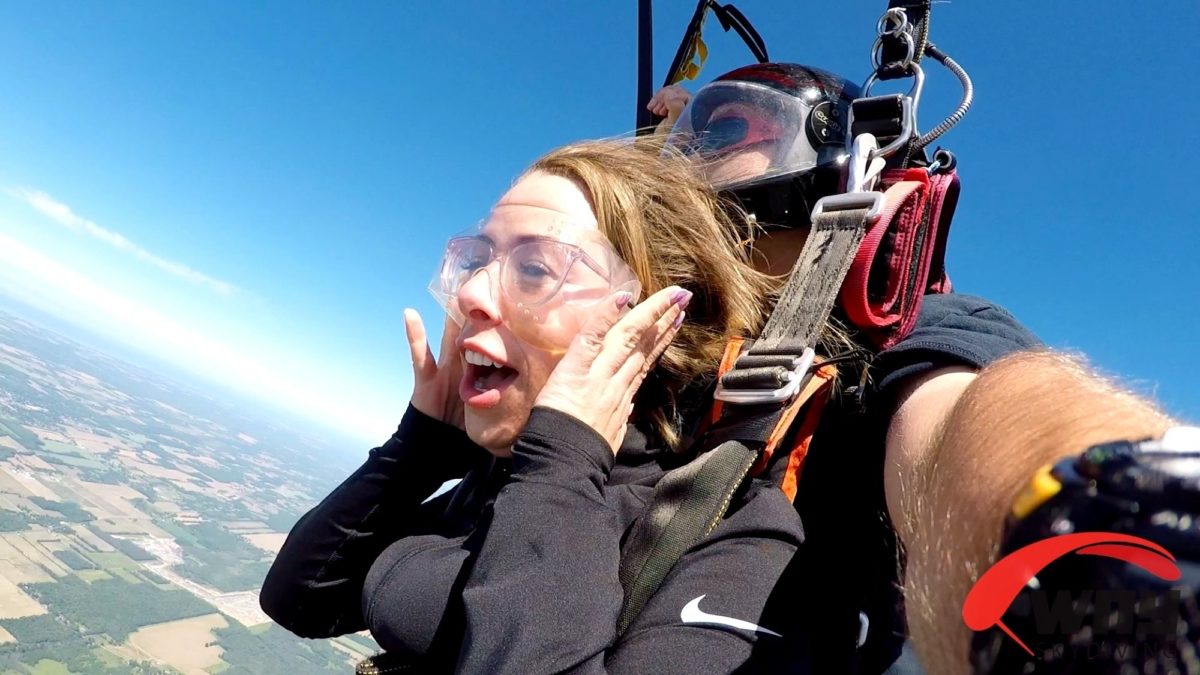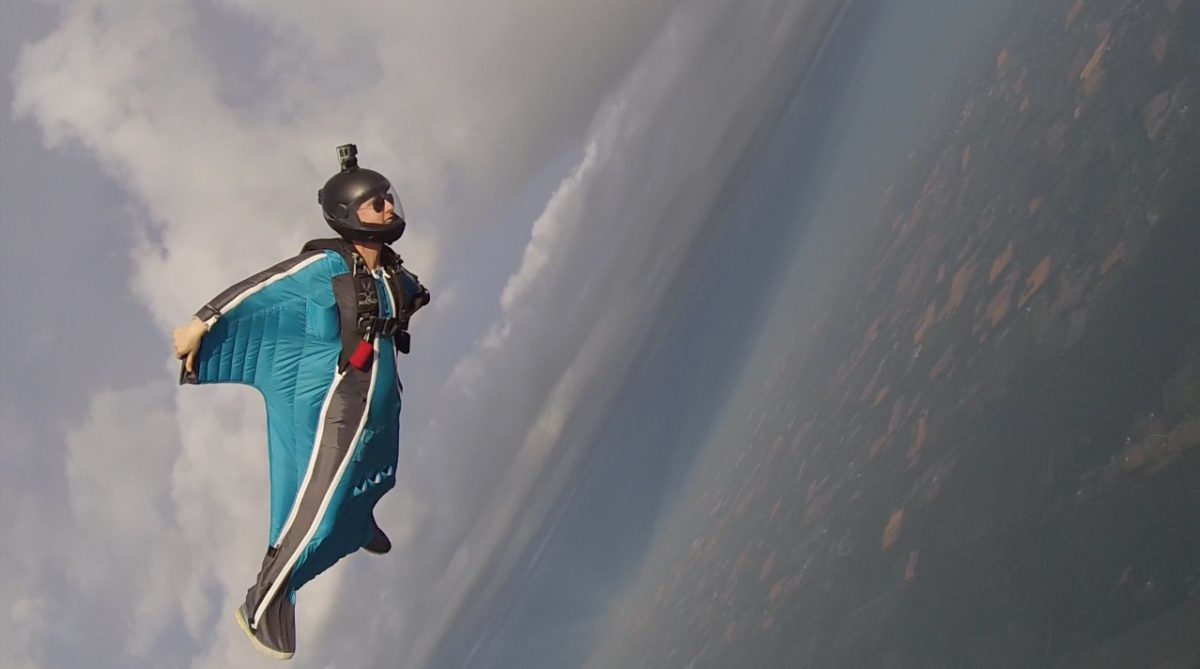When you embark on your first time skydiving experience, you may not realize that tandem skydiving is just the tip of the iceberg of the wonderful sport of skydiving. There are endless possibilities when it comes to different ways to skydive. Frequent skydivers are constantly looking for a new challenge and are spirited about bringing new ideas to our growing sport. With different skydiving niches, skydiving competitions, and non-stop learning – there is always something for everyone!
So whether you are a newly licensed skydiver looking for which skydiving discipline to try out or just looking to expand your skydiving knowledge across the board; here are the 5 most popular skydiving disciplines explained.

DIFFERENT TYPES OF SKYDIVING
1. Formation Skydiving
Formation skydiving, or relative work (RW), is the ‘OG’ way to skydive. In formation skydiving, you will solely be flying in a belly-to-the-earth position while linking up and building ‘formations’ with other skydivers. You’ve probably seen this style of skydiving in photos or videos. The formations can get pretty big and intricate; building beautiful, picturesque formations in the sky. The record for the largest big-way formation skydive stands at 400 skydivers in Udon, Thailand back in 2006.
2. Freefly Skydiving
Freeflying refers to flying in any orientation other than belly flying. This usually means flying in a head-up (or sit) position, or a head-down position. Freeflying can be either static (staying in one place), or dynamic (moving around in different orientations/positions). You can see how you can get pretty creative with freeflying. Freeflying also allows you to change your body’s orientation toward the wind which means you have more control to increase or decrease your fall rate. Freeflying is what opened the door to other types of skydiving such as artistic skydiving and vertical formation skydiving.
3. Angle Flying
Angle flying is a discipline that has gained a lot of popularity within the skydiving community in recent years. This discipline is considered a movement skydiving discipline. Angle flying is where you will position your body in a way to fall in a horizontal direction rather than straight down – essentially flying through the sky like a rocket! No, really though, some advanced angle flyers can reach speeds up to 200 mph! This discipline requires a lot of practice and skills that can be taught by professional angle flying coaches. These coaches will usually organize angle flying skills camps at different skydiving centers all over the world.
4. Canopy Piloting
Canopy piloting can be broken down into two primary categories; canopy relative work (CRW) and swooping. CRW is where canopy pilots will all come together in close to form different (and beautiful) canopy formations – it’s truly a sight to see!
Swooping is when the canopy pilot will perform certain canopy maneuvers to manipulate the downward speed into a forward momentum to glide swiftly across the ground or a “swoop pond”. This is considered a VERY advanced skill and anyone who would like to attempt swooping should receive professional instruction beforehand.
5. Wingsuiting
Wingsuiting is pretty easy to spot due to the awesome squirrel suits! Wingsuit flyers wear these suits to gain more forward momentum in freefall. According to the United States Parachute Association (USPA) Skydiver’s Information Manual (SIM), a skydiver must have 200 jumps minimum before being able to perform any wingsuit jumps. Wingsuiting opens the door to a whole new sector of skydiving as you can get pretty creative by “flocking” with other wingsuiters, performing flips or barrel rolls, and even taking someone on a wingsuit rodeo!
At WNY Skydiving, we have a specific wingsuit school dedicated to give you the safety training, gear requirements, flight path, and more to get you flying like a bird!

SKYDIVING DISCIPLINES IN COMPETITION
You can take your skydiving skills to the next level by participating in skydiving competitions either on the National level or even the World level! Competition is one of the USPA’s primary missions for the sport of skydiving which is why they conduct the National Parachuting and Skydiving Championships to recognize national champions in the sport. The top performers are then chosen to represent the United States at international parachuting and skydiving competitions. Here are the competition skydiving disciplines according to the USPA:
1. Canopy Piloting
- Swooping: judged on speed, distance, and accuracy
- Canopy Formation (CRW): two or more skydivers connecting while in parachute flight
- Accuracy Landing: jumpers fly their parachutes to land on the center of a target (2 cm in diameter)
2. Freefly
- Artistic Freestyle: free stylists (sometimes referred to as ‘sky dancers’) perform a routine for compulsory and creativity points during freefall
- Artistic Freeflying: formation freeflying involved two performers and a videographer, creating fluid movement in every axis and choreography
3. Formation Skydiving
- FS: formation skydiving is when teams perform a formation or sequential series with specific maneuvers or “dive pool”
- MFS: mixed formation skydiving teams will perform a sequence of formations while flying in head down, head up, and belly positions
- VFS: vertical formation skydiving teams perform a sequence of formation in head-down or head-up orientations
4. Wingsuiting
- Wingsuit Acrobatic: involved two flyers performing compulsory and freestyle rounds
- Wingsuit Performance: one wingsuit flyer will pass through a 1000-meter vertical course, judged on maximum distance, speed, or time of flight
5. Speed Skydiving
The skydiver flies in a head-down orientation to gain as much speed as possible. The fastest speed through a predetermined window of altitude wins!
Have more questions about skydiving disciplines, our wingsuit school, or upcoming skills camps? Contact one of our knowledgeable team members at WNY Skydiving today! Blue skies.





